Решение задач на углы параллелограмма опирается на свойства параллелограмма.
Сумма двух углов параллелограмма, прилежащих к одной стороне, равны 180º (так как они являются внутренними односторонними при параллельных прямых (противолежащих сторонах параллелограмма) и секущей (пересекающей их стороне).
Противоположные углы параллелограмма равны.
Поэтому, если в задаче дана сумма углов параллелограмма (не 180º ), то речь идет о его противолежащих углах.
Если сказано, что один из углов параллелограмма больше или меньше другого на некоторое количество градусов (или в несколько раз, или углы относятся в некотором отношении), то речь идет об углах, прилежащих к одной стороне параллелограмма.
Если в задаче требуется найти все углы параллелограмма, в начале изучения темы ищут все четыре угла.
В дальнейшем обычно находят только два из них (прилежащие к одной стороне), поскольку другие два им равны.
Рассмотрим некоторые задачи на нахождение углов параллелограмма.
Задача 1.
Найти углы параллелограмма, если один из его углов на 40º больше другого.
Дано: ABCD — параллелограмм,
∠B на 40º больше ∠A.
Найти: ∠A, ∠B, ∠C,∠D.
Решение:
Пусть ∠A=хº, тогда ∠B=х+40º.
Так как противоположные стороны параллелограмма параллельны, то
∠A+∠B=180º (как внутренние односторонние при AD ∥ BC и секущей AB).
Имеем уравнение:
х+х+40=180
2х=180-40
2х=140
х=70
Значит, ∠A=70º, тогда ∠B=70+40=110º.
∠C=∠A=70º, ∠D=∠B=110º (как противолежащие углы параллелограмма).
Ответ: 70º, 70º, 110º, 110º.
Задача 2.
Найти углы параллелограмма, если два из них относятся как 2:3.
Дано: ABCD — параллелограмм,
∠A:∠B=2:3.
Найти: ∠A, ∠B, ∠C,∠D.
Решение:
Пусть k — коэффициент пропорциональности. Тогда ∠A=2kº, ∠B=3kº.
∠A+∠B=180º (как внутренние односторонние при AD ∥ BC и секущей AB).
Составим уравнение и решим его:
2k+3k=180
5k=180
k=36
Значит, ∠A=2∙36=72º, ∠B=3∙36=108º.
∠C=∠A=72º, ∠D=∠B=108º (как противолежащие углы параллелограмма).
Ответ: 72º, 72º, 108º, 108º.
Задача 3.
Найти углы параллелограмма, если сумма двух из них равна 150º.
Дано: ABCD — параллелограмм,
∠A+∠C=150º.
Найти: ∠A, ∠B, ∠C,∠D.
Решение:
∠A=∠C=150:2=75º (как противолежащие углы параллелограмма).
∠A+∠B=180º (как внутренние односторонние при AD ∥ BC и секущей AB).
Следовательно, ∠B=180º-∠A=180-75=105º.
∠D=∠B=105º (как противолежащие углы параллелограмма).
Ответ: 75º, 75º, 105º, 105º.
24
Июл 2013
Категория: Справочные материалы
Параллелограмм. Свойства и признаки параллелограмма
2013-07-24
2015-09-16
Определение параллелограмма
Параллелограмм – четырехугольник, у которого противоположные стороны попарно параллельны.
Частные случаи параллелограмма: ромб, прямоугольник, квадрат.
Свойства параллелограмма
1. Противоположные стороны параллелограмма попарно равны
2. Противоположные углы параллелограмма попарно равны
3. Сумма смежных (соседних) углов параллелограмма равна 180 градусов
4. Сумма всех углов равна 360°

6. Точка пересечения диагоналей является центром симметрии параллелограмма
7. Диагонали параллелограмма и стороны
связаны следующим соотношением:
8. Биссектриса отсекает от параллелограмма равнобедренный треугольник
Признаки параллелограмма
Четырехугольник является параллелограммом, если выполняется хотя бы одно из следующих условий:
1. Противоположные стороны попарно равны:
2. Противоположные углы попарно равны:
3. Диагонали пересекаются и в точке пересечения делятся пополам
4. Противоположные стороны равны и параллельны:
5.
Небольшой видеоролик о свойствах параллелограмма (в том числе ромба, прямоугольника, квадрата) и о том, как эти свойства применяются в задачах:

Хорошую подборку задач на нахождение углов и длин в параллелограмме смотрите здесь.
Автор: egeMax |
комментариев 7
3. Геометрия на плоскости (планиметрия). Часть I
1. Вспоминай формулы по каждой теме
2. Решай новые задачи каждый день
3. Вдумчиво разбирай решения
Параллелограмм и его свойства
Сумма внутренних углов любого четырехугольника равна (360^circ).
Свойства параллелограмма:
(blacktriangleright) Противоположные стороны попарно равны;
(blacktriangleright) Диагонали точкой пересечения делятся пополам;
(blacktriangleright) Противоположные углы попарно равны, а сумма соседних равна (180^circ).
Признаки параллелограмма.
Если для выпуклого четырехугольника выполнено одно из следующих условий, то это – параллелограмм:
(blacktriangleright) если противоположные стороны попарно равны;
(blacktriangleright) если две стороны равны и параллельны;
(blacktriangleright) если диагонали точкой пересечения делятся пополам;
(blacktriangleright) если противоположные углы попарно равны.
Площадь параллелограмма
Площадь параллелограмма равна произведению высоты на основание, к которому проведена эта высота.
Задание
1
#1783
Уровень задания: Легче ЕГЭ
Периметр параллелограмма равен (100), его большая сторона равна (32). Найдите меньшую сторону параллелограмма.
Так как у параллелограмма противоположные стороны равны, то его периметр равен удвоенной сумме его непараллельных сторон, тогда сумма большей и меньшей сторон равна (100 : 2 = 50), значит, меньшая сторона параллелограмма равна (50 — 32 = 18).
Ответ: 18
Задание
2
#1784
Уровень задания: Равен ЕГЭ
Периметр параллелограмма равен (15). При этом одна сторона этого параллелограмма на (5) больше другой. Найдите меньшую сторону параллелограмма.
У параллелограмма противоположные стороны равны. Пусть (BC = AB +
5), тогда периметр параллелограмма (ABCD) равен (AB + BC + CD + AD =
AB + AB + 5 + AB + AB + 5 = 4cdot AB + 10 = 15), откуда находим (AB
= 1,25). Тогда меньшая сторона параллелограмма равна (1,25).
Ответ: 1,25
Задание
3
#273
Уровень задания: Равен ЕГЭ
В параллелограмме (ABCD): (BE) – высота, (BE = ED = 5). Площадь параллелограмма (ABCD) равна 35. Найдите длину (AE).
Площадь параллелограмма равна произведению основания на высоту, проведённую к этому основанию, тогда (35 = BE cdot AD = 5cdot(5 + AE)), откуда находим (AE = 2).
Ответ: 2
Задание
4
#1785
Уровень задания: Равен ЕГЭ
Из точки (C) параллелограмма (ABCD) опустили перпендикуляр на продолжение стороны (AD) за точку (D). Этот перпендикуляр пересёк прямую (AD) в точке (E), причём (CE = DE). Найдите (angle B) параллелограмма (ABCD). Ответ дайте в градусах.
В равнобедренном треугольнике углы при основании равны, тогда (angle EDC = angle DCE). Так как (angle DEC = 90^{circ}), а сумма углов треугольника равна (180^{circ}), то (angle EDC =
45^{circ}), тогда (angle ADC = 180^{circ} — 45^{circ} =
135^{circ}). Так как в параллелограмме противоположные углы равны, то (angle B = angle ADC = 135^{circ}).
Ответ: 135
Задание
5
#1686
Уровень задания: Равен ЕГЭ
Диагональ (BD) параллелограмма (ABCD) перпендикулярна стороне (DC) и равна (4). Найдите площадь параллелограмма (ABCD), если (AD=5).
По теореме Пифагора находим: (AB^2=AD^2 — BD^2 = 25 — 16 = 9) (Rightarrow) (AB = 3). (S_{ABCD} = 4cdot3 = 12).
Ответ: 12
Задание
6
#1685
Уровень задания: Равен ЕГЭ
В параллелограмме (ABCD): (P_{triangle AOB} = 
(P_{triangle AOB} = AO + OB + AB), (P_{triangle AOD} = AO + OD + AD), (BO = OD) (Rightarrow) (P_{triangle AOD} — P_{triangle AOB} = AD — AB = 1), но (AD + AB = 7) (Rightarrow) (AD = 4), (AB = 3) (Rightarrow) (ADcdot AB = 12).
Ответ: 12
Задание
7
#3617
Уровень задания: Равен ЕГЭ
Стороны параллелограмма равны (9) и (15). Высота, опущенная на первую сторону, равна (10). Найдите высоту, опущенную на вторую сторону параллелограмма.
Площадь параллелограмма равна произведению высоты на сторону, к которой высота проведена. Следовательно, с одной стороны, площадь (S=9cdot 10), с другой стороны, (S=15cdot h), где (h) – высота, которую нужно найти.
Следовательно, [9cdot 10=15cdot hquadLeftrightarrowquad h=6]
Ответ: 6
Задачи из раздела «Геометрия на плоскости» являются обязательной частью аттестационного экзамена у выпускников средней школы. Теме «Параллелограмм и его свойства» в ЕГЭ традиционно отводится сразу несколько заданий. Они могут требовать от школьника как краткого, так и развернутого ответа с построением чертежа. Поэтому если одним из ваших слабых мест являются именно задачи на вычисление площадей параллелограмма или его сторон и углов, то вам непременно стоит повторить или вновь разобраться в материале.
Сделать это легко и эффективно вам поможет образовательный портал «Школково». Наши опытные специалисты подготовили необходимый теоретический материал, изложив его таким образом, чтобы школьники с любым уровнем подготовки смогли восполнить пробелы в знаниях и легко решить задачи ЕГЭ на вычисление площадей, сторон, углов или свойства биссектрисы параллелограмма. Найти базовую информацию вы можете в разделе «Теоретическая справка».
Чтобы успешно решить задачи ЕГЭ по теме «Параллелограмм и его свойства», предлагаем попрактиковаться в выполнении соответствующих упражнений. Большая подборка заданий представлена в блоке «Каталог». Специалисты портала «Школково» регулярно дополняют и обновляют данный раздел.
Последовательно выполнять упражнения учащиеся из Москвы и других городов могут в режиме онлайн. При необходимости любое задание можно сохранить в разделе «Избранное» и в дальнейшем вернуться к нему, чтобы обсудить с преподавателем.

УСТАЛ? Просто отдохни
Parallelogram is derived from the Greek word “parallelogrammon” meaning “limited by parallel lines”. So, a parallelogram is a quadrilateral surrounded by parallel lines. Parallelogram is a basic figure in geometry and is a quadrilateral. It is a quadrilateral in which opposite sides are parallel and equal. Parallelogram also has opposite pairs of angles as equal.
In this article, we will learn more about the properties of a parallelogram, the area, and perimeter of parallelograms, and their examples, in detail.
What is a Parallelogram?
A parallelogram is one of the special types of quadrilateral. The angles between adjacent sides of a parallelogram can vary, but to be a parallelogram, the opposite sides must be parallel. A quadrilateral is a parallelogram if the opposite sides are parallel and equal. Therefore, a parallelogram is defined as a quadrilateral in which two pairs of opposite sides are parallel and equal. Below is the diagram of a parallelogram ABCD having adjacent sides ‘a’ and ‘b’ and height ‘h’.
Real-Life Examples of a Parallelogram
We came across various things in our daily life which resembles a parallelogram. Such as the computer screen, books, buildings, and tiles all are considered to be in a parallelogram shape.
The parallelogram is the most common shape which we encounter daily. Rectangle and square both can be considered a parallelogram and are easily seen in our daily life.
Shape of Parellelogram
A parallelogram is a two-dimensional closed shape with four sides, i.e. it is a quadrilateral. In parallelogram opposite sides are always parallel and equal. Opposite pairs of angles are also equal in parallelograms. In a parallelogram, the interior angle can and can not be a right angle.
Thus, all rectangles and squares can be considered parallelograms but the opposite is not true, i.e. all parallelograms are not considered to be squares or rectangles.
Special Parallelograms
Some of the special parallelograms which are widely used in geometry are,
Rectangle: It is a special case of the parallelogram in which all the interior angles are equal and their value is equal to 90°.
Square: It is a parallelogram in which all the sides and all the angles are equal and the measure of each interior angle is 90°.
Rhombus: Rhombus is also a parallelogram in which all the sides are equal but all the angles are not equal even though opposite pairs of angles are equal.
Angles of Parallelogram
Parallelogram is a quadrilateral i.e. a polygon with four sides and four angles and the opposite pair of angles are equal in the parallelogram. i.e. in a parallelogram ABCD ∠A is equal to ∠C and ∠B is equal to ∠D.
The sum of all the angles in the quadrilateral is 360°. As a parallelogram is a quadrilateral so sum of all the angles of the parallelogram ABCD equals 360°. Now,
∠A + ∠B + ∠C + ∠D = 360°
in parallelogram ∠A = ∠C and ∠B = ∠D
Thus,
∠A + ∠B + ∠A + ∠B = 360°
2(∠A + ∠B) = 360°
∠A + ∠B = 180°
Similarly, ∠C + ∠D = 180°
Thus, Adjacent angles are supplementry in a parallelogram.
Properties of Parallelogram
There are some special properties of quadrilateral, if applied, make it a parallelogram. Let’s take a look at the properties of parallelograms,
- The opposite sides of a parallelogram are parallel and equal.
- The opposite angles of a parallelogram are congruent.
- If said, one of the angles of a parallelogram is 90°. Then all the angles are 90°, and it becomes a rectangle.
- The diagonals of the parallelogram bisect each other.
- The consecutive angles of a parallelogram are supplementary.
Types of Parallelogram
Parallelograms can be classified into several types based on their properties. Based on the properties of a parallelogram and on the sides and angles, the parallelogram is classified into three types,
Rectangle
A rectangle is a parallelogram with two pairs of equal, parallel opposite sides and four right angles. Observe the rectangle ABCD and associate it with the following properties,
- Two pairs of parallel sides. Here AB || DC and AD || BC
- Four right angles ∠A = ∠B = ∠C = ∠D = 90°.
- The opposite sides are the same length, where AB = DC and AD = BC.
- Two equal diagonals where AC = BD.
- Diagonals that bisect each other.
Square
A parallelogram with four equal sides and four equal angles is called a square. Observe the square ACDB and associate it with the following properties,
- Four equal sides are AB = BC = CD = DA.
- Right angles are ∠A = ∠B = ∠C = ∠D = 90°.
- There are two pairs of parallel sides. Here AB || DC and AD || BC.
- Two identical diagonals where AD = BC.
- Diagonals are perpendicular and bisect each other; AD is perpendicular to BC.
Rhombus
A parallelogram with four equal sides and equal opposite angles is called a rhombus. Consider the diamond ABCD and assign it the following attributes,
- In the given figure, the four equal sides are AB = CD = BC = AD.
- The two pairs of parallel sides are AB || CD and BC || AD.
- The equal opposite angles are ∠A = ∠B and ∠C = ∠D.
- Here, the diagonals (AC and BD) are perpendicular to each other and bisect at right angles.
All 2D shapes have two basic formulas for area and perimeter. Let’s discuss these two parallelogram formulas in this section.
Parallelogram Formulas
Parallelogram is a basic 2-dimensional figure which is widely used in mathematics it has various formulas some of them are of Areas and Perimeter
- Area of Parallelogram
- Perimeter of Parallelogram
Let us discuss these two formulas in detail
Area of Parallelogram
The area of a parallelogram is the space between the four sides of the parallelogram. It can be calculated by knowing the length of the base and the height of the parallelogram and measuring it in square units such as cm2, m2, or inch2. Note the following parallelogram representing the base and height.
Consider a parallelogram ABCD with a base (b) and a height (h). The area of a parallelogram is calculated by the formula:
Parallelogram area = base (b) × height (h)
Area of Parallelogram without Height
When the height of the parallelogram is not known, the area of the parallelogram can still be found, provided the angle is known to us. The formula for the area of a parallelogram without height is given as:
Parallelogram area = ab Sinθ
Where a and b are the sides of the parallelogram and θ is the angle between them.
Perimeter of Parallelogram
The perimeter of a parallelogram is the length of its contour, so it is equal to the sum of all sides. In a parallelogram, the opposite sides are equal. Let’s say the sides are a and b. Therefore, the perimeter (P) of a parallelogram with edges is in units of P = 2 (a + b).
Perimeter of Parallelogram = 2 (a + b)
Parallelogram Theorem
Theorem: Parallelograms on the same base and between the same parallels have equal area.
Proof: Let’s assume two parallelograms ABCD and ABEF with the same base DC and between the same parallel lines AB and FC
To Prove: Area of parallelogram ABCD = Area of parallelogram ABEF
In the figure given below, the two parallelograms, ABCD and ABEF, lie between the same parallel lines and have the same base. Area ABDE is common between both parallelograms. Taking a closer look at the two triangles, △BCD and △AEF might be congruent.
BC = AE (Opposite sides of a parallelogram),
∠BCD = ∠AEF (These are corresponding angles because BC || AE and CE are the transversal).
∠BDC = ∠AFE (These are corresponding angles because BD || AF and FD are the transversals).
Thus, by the ASA criterion of congruent triangles. These two triangles are congruent, and they must have equal areas.
area(BCD) = area(AEF)
area(BCD) + area(ABDE) = area(AEF) + area(ABDE)
area(ABCD) = area(ABEF)
Hence, parallelograms lying between the same parallel lines and having a common base have equal areas.
Difference Between Rectangle and Parallelogram
Rectangle and parallelogram are both quadrilaterals, and the rectangle is a parallelogram as it has all the properties of a parallelogram and more. However, a parallelogram is not always a rectangle. Below are the differences in the properties of a rectangle and a parallelogram.
|
Properties |
Parallelogram |
Rectangle |
|---|---|---|
| Sides | The opposite sides of a parallelogram are equal. | The opposite sides of a rectangle are equal. |
| Diagonals | The diagonals of a parallelogram bisect each other, but the diagonals are not equal. | The diagonals of a rectangle bisect each other, and the diagonals are equal to each other as well. |
| Angles | The opposite angles of a parallelogram are equal, and the adjacent angles are supplementary. | All the angles of a rectangle are equal to each other and equal to 90°. |
Do Check,
- Area of a Triangle
- Area of a Square
- Area of Rectangle
Solved Examples on Parallelogram
Example 1: Find the length of the other side of a parallelogram with a base of 12 cm and a perimeter of 60 cm.
Solution:
Given perimeter of a parallelogram = 60cm.
Base length of given parallelogram = 12 cm.
P = 2 (a + b) units
Where b = 12cm and P = 40cm.
60 = 2 (a + 12)
60 = 2a + 24
2a = 60-24
2a = 36
a = 18cm
Therefore, the length of the other side of the parallelogram is 18 cm.
Example 2: Find the perimeter of a parallelogram with the base and side lengths of 15cm and 5cm, respectively.
Solution:
Base length of given parallelogram = 15 cm
Side length of given parallelogram = 5 cm
Perimeter of a parallelogram is given by,
P = 2(a + b) units.
Putting the values, we get
P = 2(15 + 5)
P = 2(20)
P = 40 cm
Therefore, the perimeter of a parallelogram will be 40 cm.
Example 3: The angle between two sides of a parallelogram is 90°. If the lengths of two parallel sides are 5 cm and 4 cm, respectively, find the area.
Solution:
If one angle of the parallelogram is 90°. Then, the rest of the angles are also 90°. Therefore, the parallelogram becomes a rectangle. The area of the rectangle is length times breadth.
Area of parallelogram = 5 × 4
Area of parallelogram = 20cm2
Example 4: Find the area of a parallelogram when the diagonals are given as 8 cm, and 10 cm, the angle between the diagonals is 60°.
Solution:
In order to find the area of the parallelogram, the base and height should be known, lets’s first find the base of the parallelogram, applying the law of cosines,
b2 = 42 + 52 – 2(5)(4)cos(120°)
b2 = 16 + 25 – 40(0.8)
b2 = 9
b = 3cm
Finding the height of the parallelogram,
4/sinθ = b/sin120
4/sinθ = 3/-0.58
sinθ = -0.773
θ = 50°
Now, to find the height,
Sinθ = h/10
0.76 = h/10
h = 7.6cm
Area of the parallelogram = 1/2 × 3 × 7.6
= 11.4 cm2
Example 5: Prove that a parallelogram circumscribing a circle is a rhombus.
Solution:
Given:
- Parallelogram ABCD
- Circle PQRS
To prove: ABCD is a rhombus.
Proof:
We know that the tangents drawn from an exterior point to a circle are equal to each other. Therefore:
AP = AS ⇢ (1)
BP = BQ ⇢ (2)
DS = DR ⇢ (3)
CR = CQ ⇢ (4)
Adding the LHS and RHS of equations 1, 2, 3, and 4:
AP + BP + DS + CR = AS + BQ + DR + CQ
AB + DR + CR = AS + DS + BC
AB + CD = AD + BC
Since the opposite angles of a parallelogram are equal:
2AB = 2BC
AB = BC, and similarly, CD = AD.
Therefore: AB = CD = BC = AD.
Since all the sides are equal, ABCD is a rhombus.
FAQs on Parallelogram
Q1: What is a parallelogram?
Answer:
A parallelogram is a quadrilateral with opposite pair of lines as parallel and equal.
Q2: What is the Area of a Parallelogram?
Answer:
The space occupied inside the boundary of the triangle is termed the area of the parallelogram. It can be calculated using the formula,
Area of Parallelogram = Base (b) × Height (h)
Q3: What is the Perimeter of a Parallelogram?
Answer:
The length of all the boundaries of the triangle is termed the perimeter of the parallelogram. It can be calculated using the formula,
Perimeter of Parallelogram = 2(l + b)
where,
l is the length of parallelogram
b is the base of parallelogram
Q4: Does a parallelogram have equal diagonals.
Answer:
No, the diagonals of a parallelogram are not equal. However, the diagonals of a parallelogram bisect each other.
Q5: How many lines of symmetry parallelogram have?
Answer:
In general, a parallelogram has none or 0 lines of symmetry. But in special cases of parallelogram line of symmetry is present. Lines of symmetry of special parallelograms are,
Square 4 Rhombus 2 Rectangle 2
Q6: Does a parallelogram have equal sides?
Answer:
Yes, all parallelograms have equal pairs of opposite sides but not all sides are equal in a parallelogram.
Q7: Is a rhombus a parallelogram?
Answer:
Yes, a rhombus is a parallelogram. A rhombus has all the properties of the parallelogram and more.
Q8: How is a parallelogram different from a quadrilateral?
Answer:
All parallelograms are quadrilaterals, but not all quadrilaterals are necessarily parallelograms. For example, a trapezoid is a quadrilateral, not a parallelogram. For a quadrilateral to be a parallelogram, all opposite sides must be parallel and equal.
Q9: Is a square a parallelogram?
Answer:
Yes, a square is a parallelogram as it has all the properties of a parallelogram and more since a square has some extra properties (For example, all angles are right angles, etc.), all parallelograms are not squares.
Q10: Is a rectangle a parallelogram?
Answer:
Yes, a rectangle is a parallelogram. Rectangle is a parallelogram as it has all the properties of a parallelogram and more. However, a parallelogram is not always a rectangle.
Как найти углы параллелограмма
Параллелограммом называют четырехугольник противолежащие стороны которого попарно параллельны. Также параллелограмм обладает такими свойствами, как противоположные стороны равны, противоположные углы равны, сумма всех углов равна 360 градусов.

Вам понадобится
- Знания по геометрии.
Инструкция
Предположим дан один из углов параллелограмма и равен A. Найдем значения остальных трех. По свойству параллелограмма противоположные углы равны. Значит угол, лежащий напротив данного равен данному и его значение равно А.
Найдем оставшиеся два угла. Так как сумма всех углов в параллелограмме равна 360 градусов, а противоположные углы между собой равны, то получается, что угол, принадлежащий одной стороне с данным, равен (360 — 2А)/2. Ну или после преобразования получим 180 — А. Таким образом в параллелограмме два угла равны А, а два других угла равны 180 — А.
Обратите внимание
Значение одного угла не может превышать 180 градусов. Полученные значения углов можно легко проверить. Для этого сложите их и, если сумма равна 360, все посчитано верно.
Полезный совет
Прямоугольник и ромб являются частным случаем параллелограмма, поэтому все свойства и методы вычисления углов применимы и к ним.
Войти на сайт
или
Забыли пароль?
Еще не зарегистрированы?
This site is protected by reCAPTCHA and the Google Privacy Policy and Terms of Service apply.






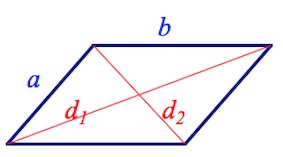

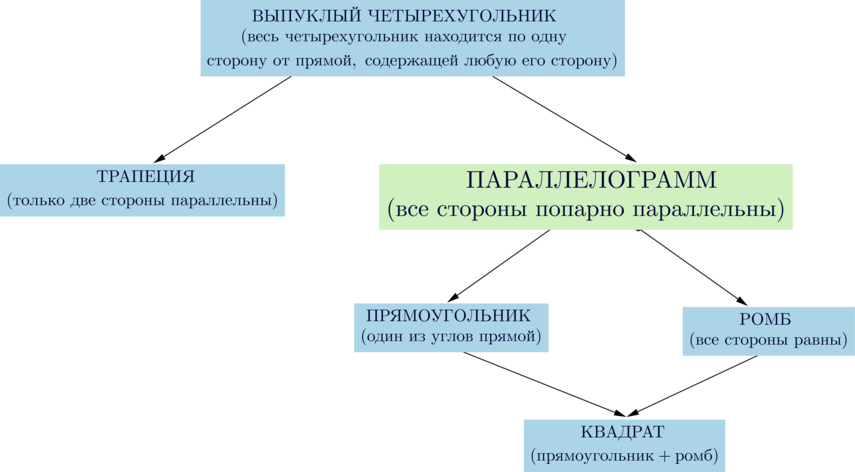
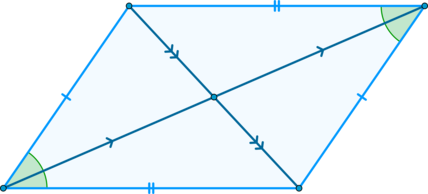

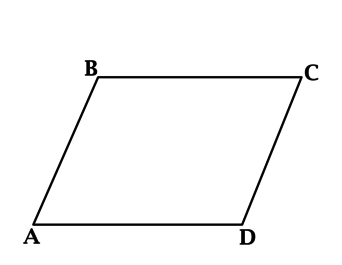
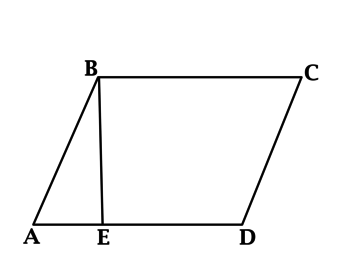
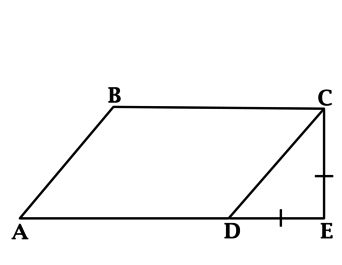


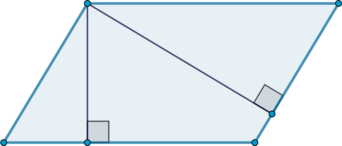
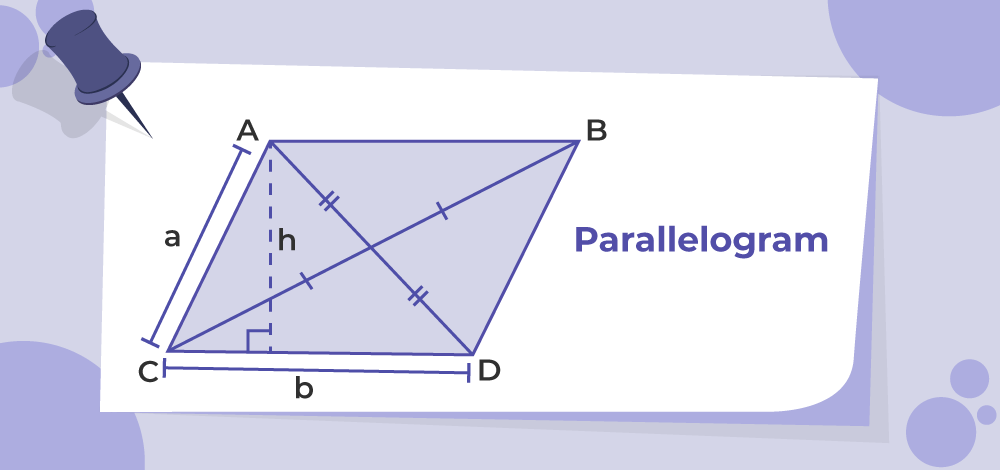

.png)
.png)
.png)
.png)

.png)
